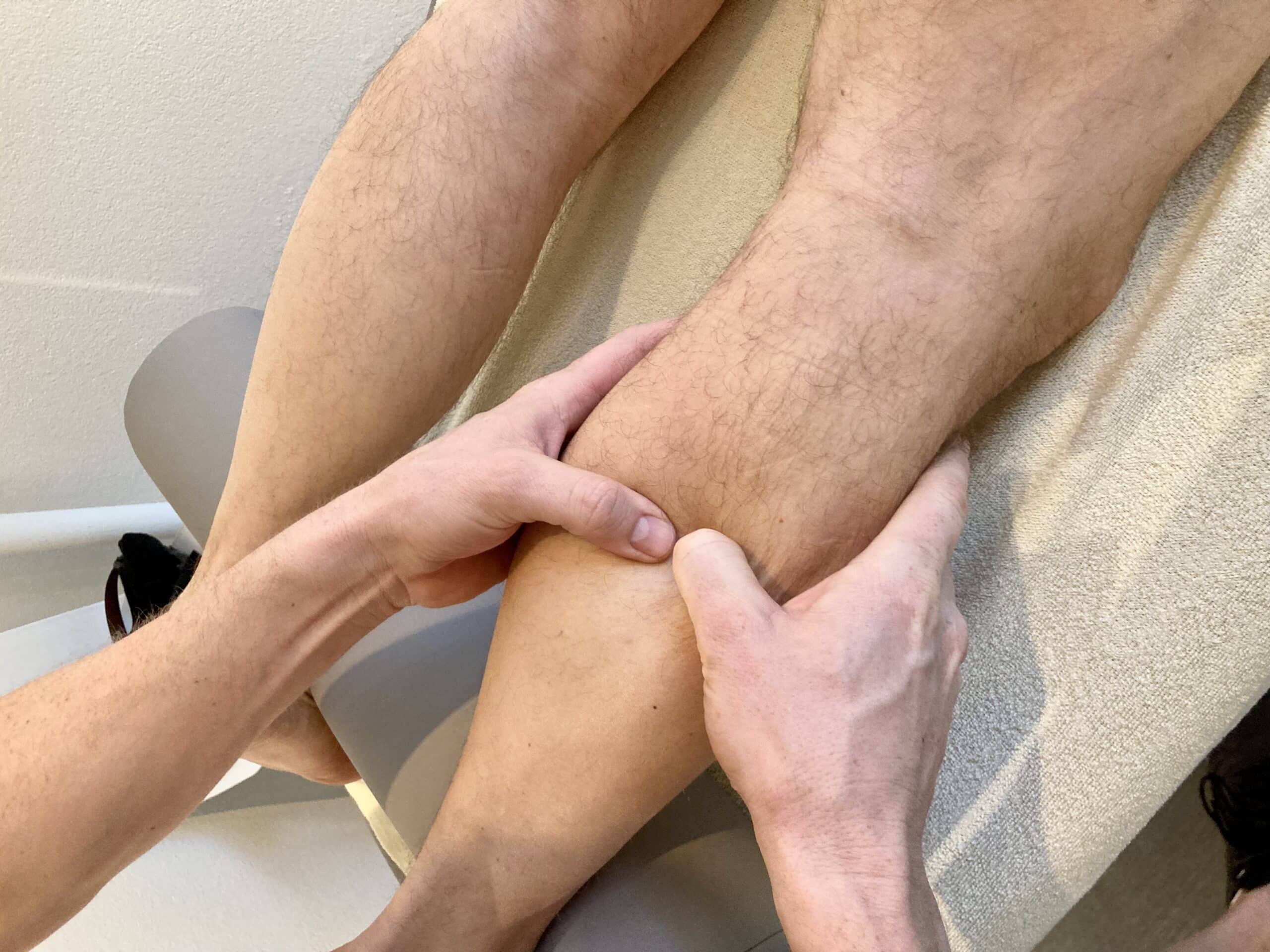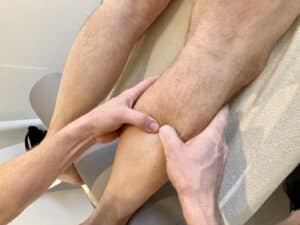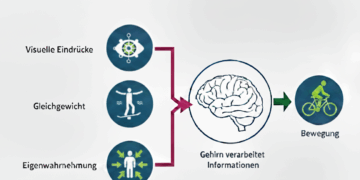Fascia - what is it? Their tasks. Do I have any influence on them?
Fasciae: What are they and how do they affect your pain?
What are fasciae?
Fascia is a fascinating tissue in the human body that has long received little attention. This white network of connective tissue is located under the skin and Envelops muscles, organs, bones and even nerves. Formerly regarded as mere filling material, we now know that fascia is a central role for our stability and mobility play. They form a comprehensive network that runs through the entire body and connects all structures with each other.
Fascia pain - What exactly are fasciae?
What tasks do fasciae have?
Fasciae fulfill numerous important functions in the body. One of their main tasks is to separate the muscle groups from one another. They also enable the Flow of lymphatic fluid, waste products are removed from the cells. Fascia is rich in nerve endings and pain sensors, which means that it plays an important role in pain perception and movement.
Fasciae also act as a kind of shock absorber and ensure that forces are evenly distributed in the event of sudden movements or strain. As a result, they make a significant contribution to stabilizing the body. Fasciae are also involved in the transmission of movement impulses and support coordination between different muscle groups.
Why do fasciae hurt?
Fascia pain can be triggered by various factors. Lack of exercise, poor posture or psychological stress can cause fascia to stick together or harden. In this state, they are less elastic and can cause pain. If the fascia shortens or hardens due to a lack of blood flow, the elastic fibers are replaced by less elastic collagen. This can lead to muscle stiffness, limited mobility and joint pain.
Another problem is the so-called myofascial trigger points, small hardenings in the muscles and fascia that can often cause severe pain. These trigger points are often caused by overloading, injuries or poor posture.
How fascia and nerves work together
Fascia not only envelops muscles, but also organs, bones and nerves. Due to this close interconnectedness, they are directly connected to our autonomic nervous system, which controls numerous unconscious bodily functions, including digestion and breathing. This connection explains why fascial pain is often triggered by stress and emotional strain.
Fascia is a complex organ that can adapt to different conditions, but is also sensitive to changes. Stress and tension can cause the fascia to contract and stick together, which in turn leads to pain. On the other hand, relaxation techniques and targeted movement exercises can help to relax the fascia and relieve pain.
Influence of nutrition on the fasciae
The structure and elasticity of the fascia are significantly influenced by the so-called fibroblasts, which produce collagen fibers. A balanced diet plays a key role in maintaining healthy fascia. Complex carbohydrates, high-quality proteins and sufficient fluids ensure that the fascia remains elastic and resilient. A healthy acid-base balance is also beneficial for fascia health.
Nutrients such as vitamin C, which is essential for collagen production, and omega-3 fatty acids, which have an anti-inflammatory effect, are particularly important. Sufficient fluid intake is also essential, as fasciae contain a lot of water and can only maintain their elasticity in this way. At least two liters of water or unsweetened tea per day should therefore be on the menu.
Categories
- Osteoarthritis
- Leg
- Extensions
- Dry needling
- Elbow
- Foot
- Balance
- Hand
- Hip
- Pine
- Knee
- Headache
- Lymphatic drainage
- Mobilization
- Muscle pain
- Myofascial therapy
- Neck pain
- Physiotherapy Höngg
- Physiotherapy Wipkingen
- Physiotherapy Zurich
- Rehabilitation
- Back pain
- Shoulder arm
- Shoulder pain
- Pregnancy
- Dizziness
- Sports
- Trigger points
- Exercises
- Lower leg
- Injury prevention
- Wade
- What to do?
- Wound healing
Fascia training as a solution
Targeted fascia training can effectively alleviate acute and chronic pain. Gentle stretching exercises and manual therapies such as trigger point treatments can loosen stuck fascia and promote blood circulation. It is important to carry out fascia training regularly to ensure the long-term suppleness and elasticity of the tissue.
Methods and therapeutic approaches
There are various methods for the treatment and care of fasciae:
- Movement training: Pilates, yoga and tai chi are proven methods for promoting fascial connective tissue and improving body awareness. These exercises include many gentle stretches and targeted movements that keep the fascial network supple.
- Manual therapies: Techniques such as trigger point treatments and Rolfing can have a positive effect on the fascial system and improve lymph flow. These procedures help to loosen adhesions and promote blood circulation.
- Dry needling and trigger point therapy: These methods are aimed at relieving stubborn muscle tension and myofascial trigger points targeted treatment. They help to relax the fascia and relieve pain.
- Fascia training and fascia rolls: The use of fascia rolls and special training sessions can loosen the tension in the fascia. It is advisable not to do this more than once or twice a week, unless your physiotherapist recommends otherwise. Regular training keeps the tissue elastic and resilient.
- Balance training: Exercises to improve balance also have a positive effect on muscle and fascia tension. They promote the stability and elasticity of the entire system, which leads to less tension and pain.
Conclusion
Fascia has a significant influence on your well-being and mobility. With targeted care and training, you can reduce fascia pain and improve your quality of life. Our experienced team of physiotherapists is at your side with help and advice to develop individual therapy approaches and thus improve your fascial health. Put your trust in our expertise and take your health into your own hands. Take Contact with us or Book an appointment online.
Neuro-focused training in physiotherapy
What is neuroathletic training (NAT)? Neuroathletic training (NAT) is a modern and holistic therapeutic approach...
Read moreAfter the cruciate ligament rupture: The way back to sport in Zurich
Your way back to sport after a cruciate ligament rupture A wrong step, an abrupt turn, a cracking sound...
Read moreSki preparation Zurich: Neuro-focused training for safe performance on the slopes
Ski preparation Zurich: Neuro-focused training for safe performance on the slopes at Physio Waidfuss The first snow...
Read morePhysiotherapy for seniors Zurich Wipkingen
Movement is life - even at 60+ Growing older brings with it many positive aspects: more time for family and...
Read moreKnee injury after accident what to do?
After the accident: How physiotherapy helps with knee and leg injuries in Zurich Wipkingen The way back to full fitness is...
Read morePut an end to office back pain in Zurich Wipkingen
Put an end to office back pain Do you know what it's like? A long working day, lots of screen time - your neck gets...
Read moreLymphoedema of the legs
Lymphatic drainage for lymphoedema of the legs: causes, symptoms, treatment and the five most important self-help tips Lymphoedema...
Read moreHamstrings injuries
Hamstring injuries: Prevention, symptoms and rehabilitation of hamstring injuries The hamstrings - also...
Read more









